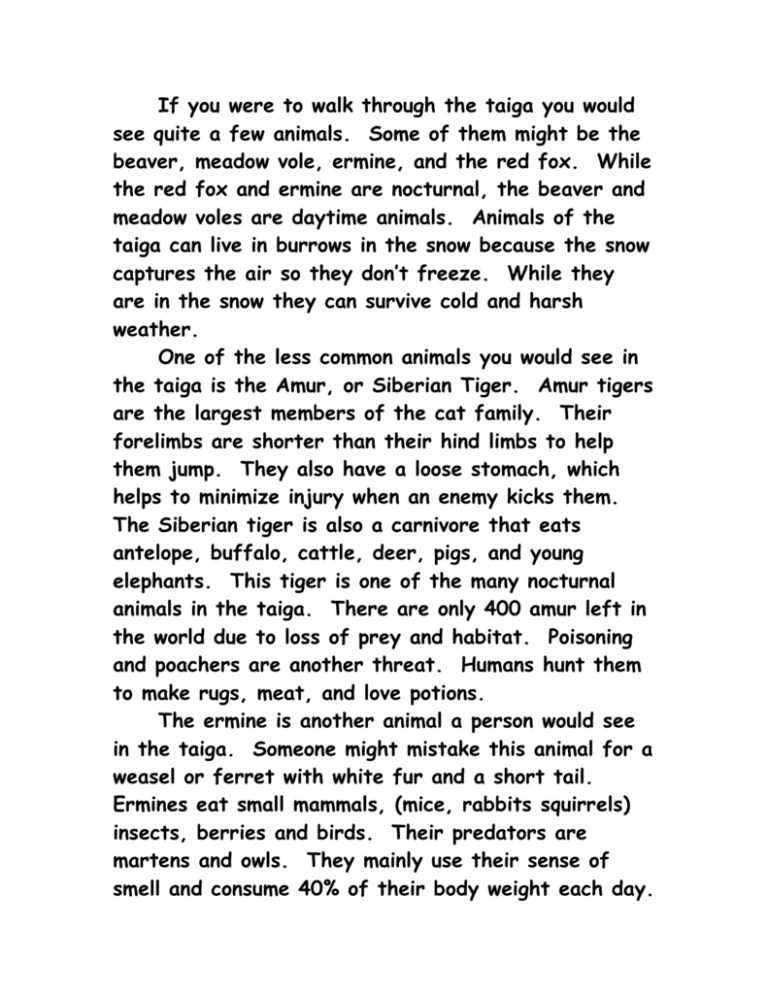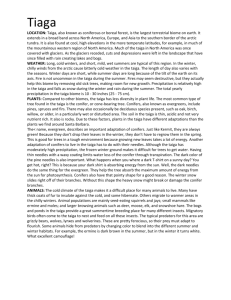animals
advertisement

If you were to walk through the taiga you would see quite a few animals. Some of them might be the beaver, meadow vole, ermine, and the red fox. While the red fox and ermine are nocturnal, the beaver and meadow voles are daytime animals. Animals of the taiga can live in burrows in the snow because the snow captures the air so they don’t freeze. While they are in the snow they can survive cold and harsh weather. One of the less common animals you would see in the taiga is the Amur, or Siberian Tiger. Amur tigers are the largest members of the cat family. Their forelimbs are shorter than their hind limbs to help them jump. They also have a loose stomach, which helps to minimize injury when an enemy kicks them. The Siberian tiger is also a carnivore that eats antelope, buffalo, cattle, deer, pigs, and young elephants. This tiger is one of the many nocturnal animals in the taiga. There are only 400 amur left in the world due to loss of prey and habitat. Poisoning and poachers are another threat. Humans hunt them to make rugs, meat, and love potions. The ermine is another animal a person would see in the taiga. Someone might mistake this animal for a weasel or ferret with white fur and a short tail. Ermines eat small mammals, (mice, rabbits squirrels) insects, berries and birds. Their predators are martens and owls. They mainly use their sense of smell and consume 40% of their body weight each day. The ermine is found in the Arctic Tundra as well as the Taiga. This animal is known also as the stoat or short-tailed weasel. The last animal I will tell you about is the red fox. Foxes are the smallest members of the dog family. Red foxes have auburn colored fur and look like a dog. They eat rabbits, birds, invertebrates, wild fruit, and rodents. They survive in this biome by resting in a burrow during the day. Red foxes are also nocturnal and teach their pups how to hunt for a few weeks after nursing. After learning the pups become individual hunters.











